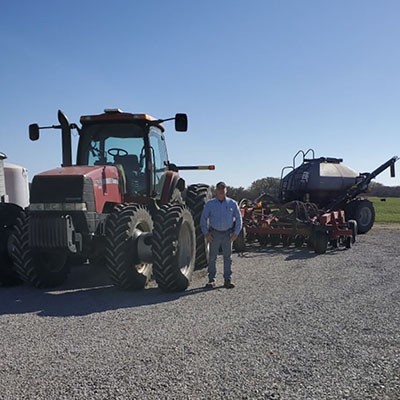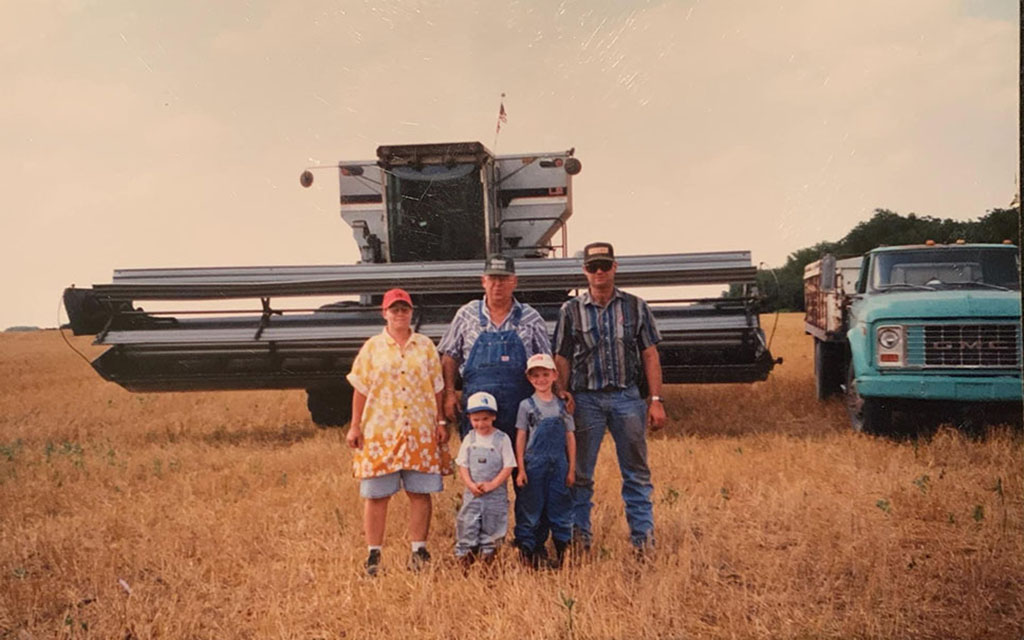As if this year hasn’t been rough enough on the agriculture community, farmers can now add “global diesel shortage” to their hardship bingo card for 2022.
Just weeks after Oklahoma Gov. Kevin Stitt signed an executive order to continue drought relief efforts for farmers in that state, reports of what some are calling a devastating diesel shortage and the higher prices that come with it are rolling in to accompany farmers into the already harsh winter season.
“I’m harvesting soybeans that aren’t even worth harvesting right now,” Oklahoma farmer Tim Heinrich said last month.
Heinrich, who runs a 3,000-acre operation in north central Oklahoma, says a modern combine like the one he uses typically needs about 150 gallons a day to get the job done – a job that might ultimately cost him more in fuel than he will get back in sales. And the combine is just one piece of the operation affected by diesel costs.
“Most of us have diesel pickups that we use to feed cows with all winter long, all the trucks hauling the crops to and from the farm, all of our farm sprayers, our combines and our tractors,” said Heinrich, who also serves on the Garfield County Conservation District board of directors. “All of it is at the mercy of the rising cost of diesel.”
The U.S. Energy Information Administration said in its Short Term Energy Outlook in November that diesel prices were nearly 50% higher than they were a year earlier, and reserves were at the lowest level since 1951.
“Demand is returning back to where it was in 2019, and supply is literally producing a million barrels a day less than it was in 2019,” said Rep. Frank Lucas, R-Okla., former chairman of the House Agriculture Committee.

Oklahoma farmer Tim Heinrich with some of his farm equipment in his wheat field. Heinrich said the cost of diesel to run his equipment is hurting his bottom line. (Photo courtesy Heinrich family)
Lucas said one of the challenges is that 5% of the refining capacity that was around to convert oil into diesel three years ago no longer exists.
“It’s been converted to do biofuels, or it was antiquated older equipment, or it was determined to be cost-effective, when demand was down” to scale back refineries, Lucas said. “So we have 5% less refining capacity, but the refineries that are running are working harder than they have in 20-plus years.
“So as demand goes up … supply is restricted by how much we can grow,” he said. “You can only get so much diesel out of a barrel of oil. It’s just the nature.”
Another challenge is Russia.
“Supply and demand circumstances in the world affect the prices in Oklahoma. Add in the dictator Mr. Putin invading his neighbors and the Ukraine, and Europe and the Western world’s response to stop buying Russian products. That’s also affected things,” Lucas said.
Heinrich also serves on the Garber co-cop board, a locally owned cooperative that provides fertilizer, feed, fuel and chemicals to farmers in the area. He said the diesel shortage is affecting other farm products as well.
“We’ve had to cut back on some of our farm chemicals and fertilizers because we just can’t get them,” he said. “There are so many shortages right now because a lot of these things are manufactured at plants that burn diesel.”
Heinrich said the community is trying to adapt and learn to do more with less, but it’s hard to keep up with this and the rise in inflation.
“All of our input costs have doubled or tripled. We’re the only part of the food chain that cannot control our sales price,” he said.
Whether it is an operation of a couple thousand acres or a couple dozen, farmers all across the state are feeling the pressure of these price increases.
“Farmers are cutting back on everything from farm life, to family life,” said Megan Whitehead, who runs a small 30-acre farm with her family out of Kingfisher, Oklahoma. “All the prices have gone up except for what we earn.”
Whitehead recently had to sell her herd of beef cattle when she could not afford their hay feed in September. Still recovering from a recent knee surgery, she said she will have to put in for extra hours at the hospital where she works to keep her family from having to sell off parts of their land to get through the winter.
“I’m lucky that I can pick up overtime every other week at the hospital, but so many other farming families don’t have that option,” Whitehead said.
Heinrich said most Oklahoma farmers are operating on borrowed money.
“Almost every farmer out here has a big old loan. The people in town might drive by and they see our equipment and our barns and they think, ‘Oh, he’s got it made,'” Heinrich said. “But we’re all one hiccup away from losing it. Every one of us is just one hiccup from losing it.”
–Gaylord News is a reporting project of the University of Oklahoma Gaylord College of Journalism and Mass Communication, which has partnered with Cronkite News to expand coverage of Indigenous communities.
